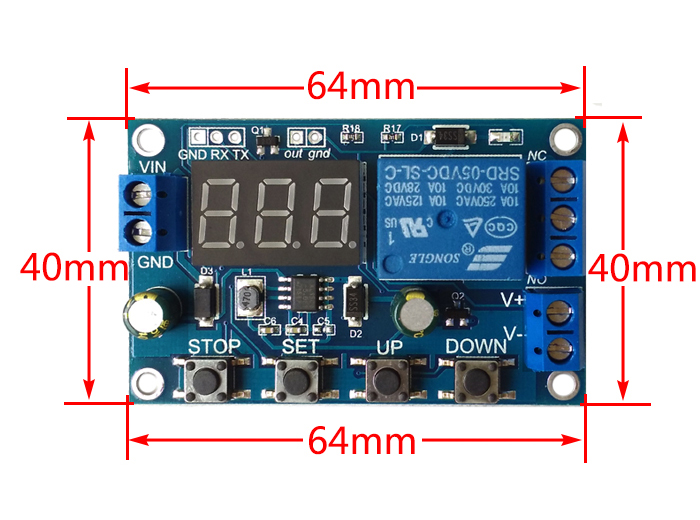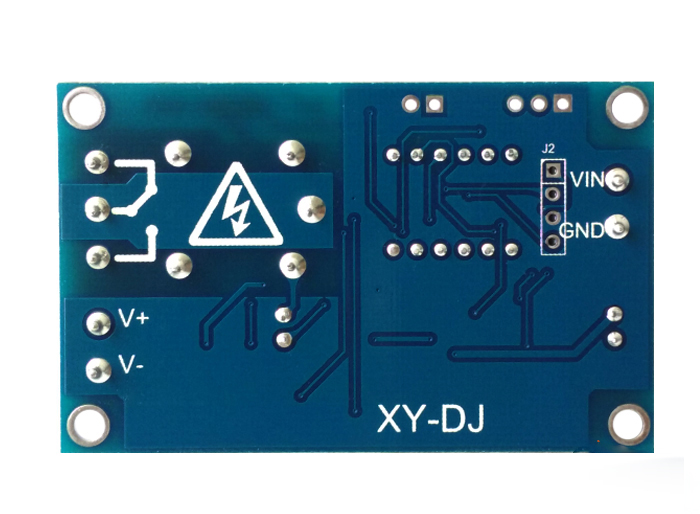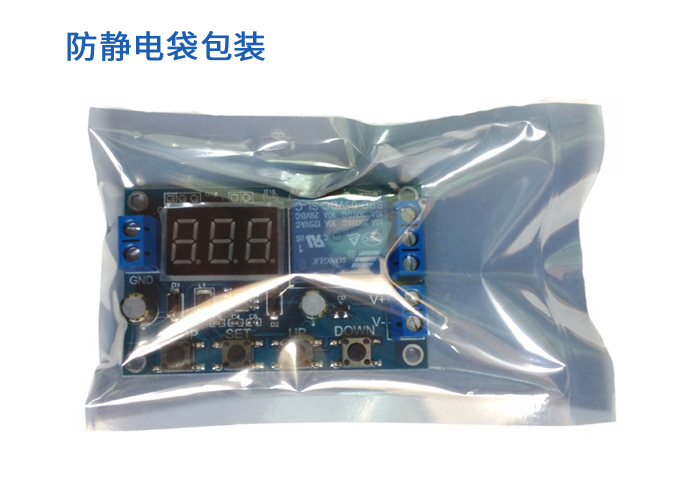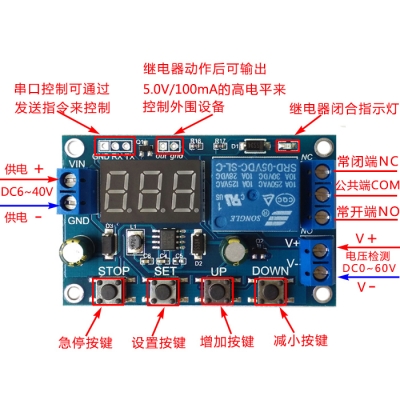Reminder: Please do not touch the back of the board or other solder joints on the board at will after power on (the human body will conduct electricity with static electricity), otherwise it will cause the program to be disordered and fail. You need to reconnect the 24V standard voltage to reset. Please pay attention when using it! !
Module highlights:
1. Battery charge and discharge control, automatically power off after setting;
2. The charge and discharge time can be set;
3. With serial port communication function, the working status of the relay can be monitored in real time through the serial port;
4. An additional signal output, when the relay conduction condition is met, the output is high, which can control other devices.
5. There is a key emergency stop function (STOP key), with reverse connection protection, reverse connection does not burn;
Operating mode:
Voltage upper limit: UL1, voltage lower limit nL1, voltage upper limit must be greater than voltage lower limit (UL1>nL1)
U-1: Charging measurement: When the measured voltage is lower than the lower limit voltage, the relay is closed, and higher than the upper limit voltage, the relay is disconnected;
U-2: Charging measurement time control: set the charging time (OP); when the measured voltage is lower than the lower limit voltage, the relay is closed, and the OP time starts to count down after the pull-in. When the time is up, the relay is off; when the voltage is higher than the upper limit voltage, the relay disconnect.
U-3: Discharge detection: When the measured voltage is lower than the lower limit voltage, the relay is disconnected, and higher than the upper limit voltage, the relay is closed;
U-4: Discharge detection time control: set the discharge time (OP); when the measured voltage is higher than the upper limit voltage, the relay is closed, and the OP time starts to count down after the pull-in. When the time is up, the relay is disconnected; when the measured voltage is lower than the lower limit Voltage, the relay is off;
U-5: Closed in the interval: When the measured voltage is between the upper limit and the lower limit, the relay is closed, otherwise it is disconnected;
U-6: Closed outside the interval: When the measured voltage is lower than the lower limit voltage or higher than the upper limit voltage, the relay is closed, and the relay is disconnected in other cases;
Product parameters:
1: Supply voltage: DC6--40V, voltage detection range DC 0--60V, suitable for various batteries below 60V, voltage test error ±0.1V.
2: Charge and discharge time (OP) range: 0-999 minutes.
3: Weight 28G
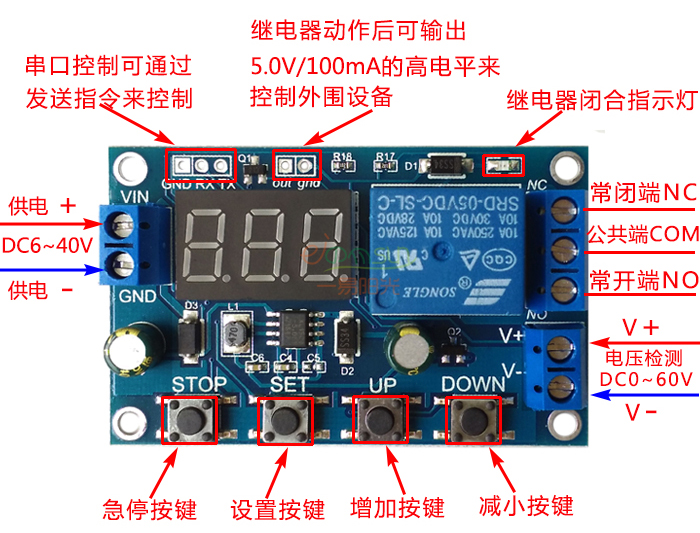
How to set parameters
1. First determine the working mode of the relay;
2. According to the working mode of the relay, in the main interface (when the module is powered on, it will flash the current working mode (default U-1 mode), and then enter the main interface) "Long press the SET button for 2 seconds and then release "Enter the mode selection interface, and select the mode (U-1~U-6) to be set by short pressing the UP and DOWN buttons;
3. After selecting the mode to be set (such as U-1), short press the SET button to set the corresponding parameters. At this time, the parameters to be set will flash (UL1 voltage upper limit, nL1 voltage lower limit, OP conduction time), and pass UP, DOWN adjusts the parameter value, supports long press (rapid increase or decrease) and short press (increase or decrease by 1 unit); short press the SET key to set the next parameter of the current mode, the process is the same as above;
4. After setting the parameters of the selected mode, press and hold the SET button for 2 seconds and then release it. The currently set mode will flash, and then return to the main interface. The parameter setting is successful, very simple!
5. On the main interface, short press the DOWN button to switch between voltage and time, which is very simple.
Mode selection interface: Long press the SET button to enter, after the setting is completed, long press the SET button to exit and return to the main interface, very simple!
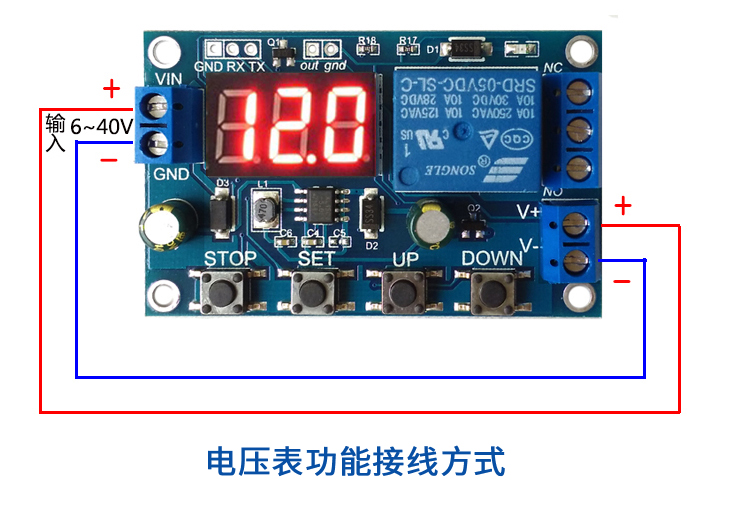
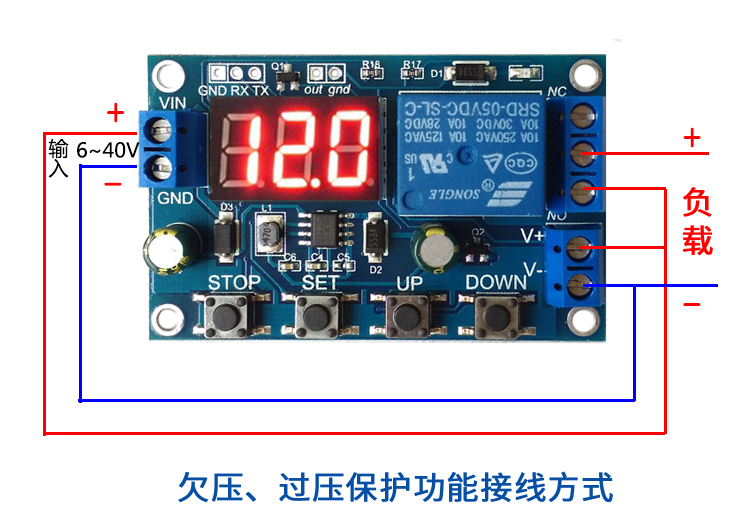
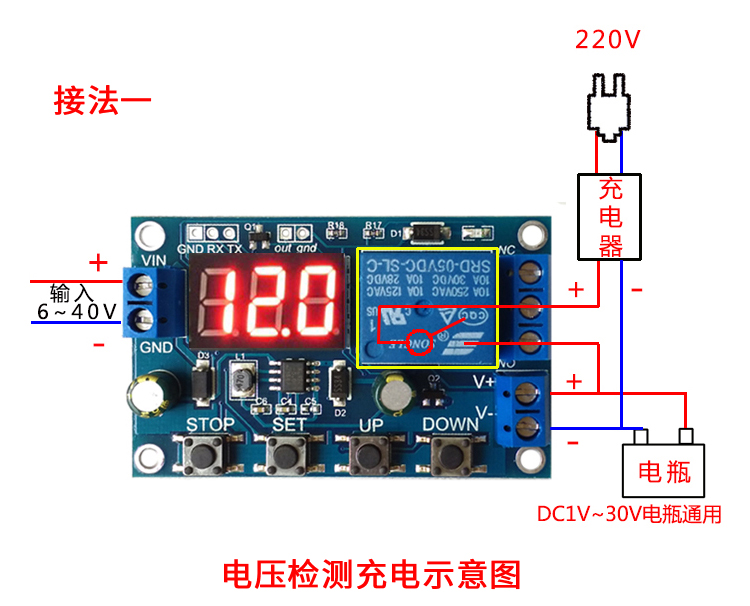
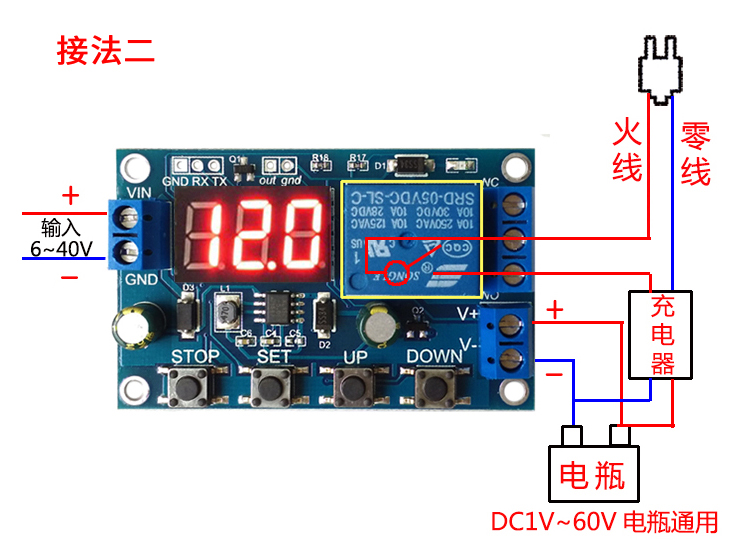
5. Serial port control (single-chip TTL level communication)
Communication standard: baud rate 115200 bps
Data bits: 8
Stop bit: 1
Check Digit: none
Flow control: none
Serial command:
"U-1": working mode (value range U-1 ~ U-6)
"000": Time parameter 0: Do not enable timing function Non-0: Enable timing function (value range 000~999)
"dw02.9": set lower limit voltage
"up10.1": Set the upper limit voltage (value range 00.0V~60.0V)
"get": Get the current settings
"on": Allow the relay to be turned on
"off": always close the relay
"start": start uploading data
"stop": stop uploading data
The above commands can be any combination of two, which need to be separated by commas
Such as: "dw02.9,up10.1" set the lower limit voltage 02.9V and the upper limit voltage 10.1V
Upload status: test voltage + conduction time + status
"00.0V,00:00:00,OP\r\n"
00.0V: measured voltage
00:00:00: Relay on time
Status: OP relay is on, CL relay is off
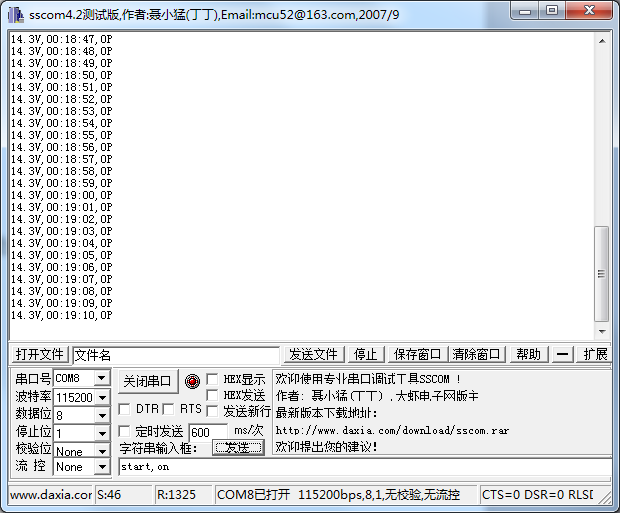
STOP button function expansion:
Relay enable mode:
1. ON: the relay is allowed to conduct during OP conduction;
2. OFF: The relay is forbidden to conduct and is always off;
Short press the STOP button on the main interface to switch between ON and OFF, the current state will flash, and then return to the main interface. (This function is an emergency stop function, one key to open the closed relay)
Sleep mode:
1. C-P sleep mode: within five minutes, without any operation, the digital tube automatically turns off the display, and the program runs normally;
2. O-d normal mode: the digital tube is always on for display;
Long press the STOP button for 2 seconds and then release it to realize the switch between C-P and O-d states. The current state will flash, and then return to the main interface.
